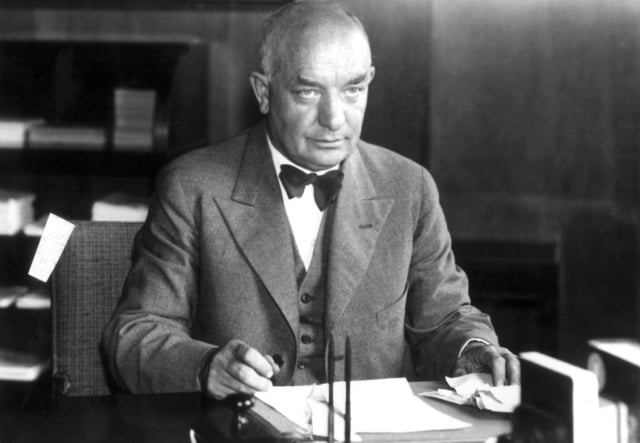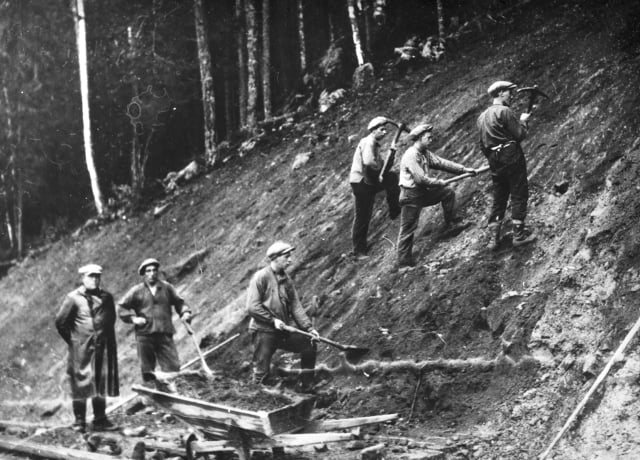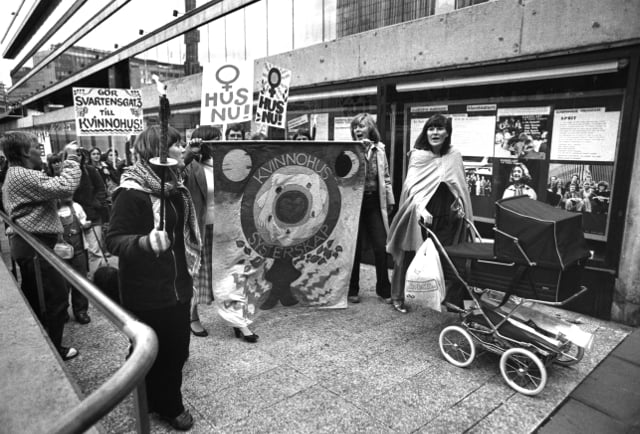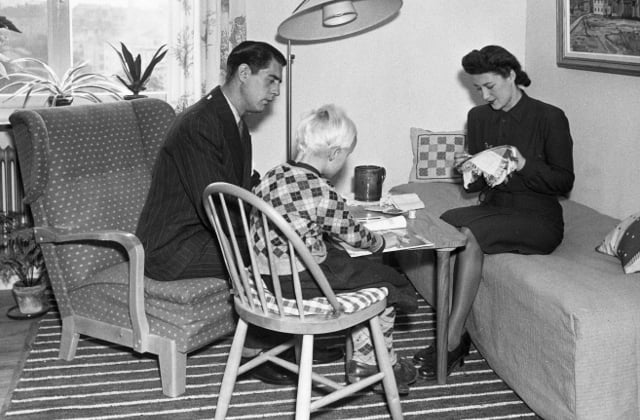This article is available to Members of The Local. Read more Membership Exclusives here.
What “the Empire” is to British national identity, and “la Republique” (the Republic) is to the French, so “Folkhemmet” (the People's Home) is to Swedish national identity, argues Swedish economic historian Jenny Andersson.
Although all of these conceptualizations are now a part of the past, they still retain an important place in how their respective countries are perceived, by both insiders and outsiders. Just as importantly, they each have a backstory that provides important historical insight into how and why major political and social transformations take place.
In the case of Sweden, the concept of the People's Home – which embodied a political approach that was midway between Capitalism and Communism – drove Swedish economic, social and political policies for much of the 20th century. It helped transform Sweden from a country with major class inequalities that was struggling to meet new industrial demands into a modern nation consistently ranked among the best in the world. And while it is no longer the mainstay of Swedish political thought and identity, it still carries enormous significance today.
When Swedish Social Democratic politician Per Albin Hansson made a rousing speech during a Riksdag debate in 1928, in which he stated, “The good home knows no privilege or neglect, no favorites and no stepchildren,” he drew on existing conservative ideology of the people's home. In doing so, he contributed not only to bridging a major political division, but also to steering the country away from more extreme forms of government taking hold in Europe at the time, including Fascism and Communism.

Per Albin Hansson. Photo: Pressens Bild
Four years later, when Hansson was elected to his first term as Prime Minister, he and the dominant Social Democratic party were able to realize a vision of the Swedish People's Home that was to last until the 1990s. Behind this transformation of the state was a recent history of class struggle and mass emigration. Helping to guide it were women, whose place in the “small” home of private family life became increasingly important to the evolution of the “large” home of national political life.
“Class distinction must go…”
Sweden had been profoundly impacted by the mass emigration of around 20 percent of its population between 1830 and 1930. By the 1880s, the situation had created a crisis of conscience among politicians and intellectuals who sought to understand and solve the problems driving it.
But even as individual social and political problems in Sweden were addressed, emigration had continued. Industrialization had opened up more work than had been previously available, for instance, and yet Swedes continued to leave the country. This resulted in an increasing awareness that only through some major alterations would the country become a place fewer citizens would want to leave.
By the 1920s, when the mass emigration from Sweden was finally reaching its end, the country had changed dramatically for the better, driven in no small part by the causes and effects of the emigration itself. Many serious issues remained unresolved, however. Among these was the issue of class struggle, which was still very much at the centre of political debate and national disunity.
Prior to and during much of the emigration period, class had been divided mainly along the lines of the peasantry and the elite. But with industrialization, Sweden had gained a large class of workers seeking rights and recognition. With them came increased urbanization and consequent demands for housing and social services. Simultaneously, Sweden was facing a severe labour shortage brought about by a combination of the mass emigration and an unusually low birth rate.

Workers in Sweden in 1928. Photo: Pressens Bild
Sweden not only needed to keep its working class happy, it also had to create a social order that would attract and retain workers to meet increasing industrial and labour demands.
“The problem was no longer the working people as a potential threat to order because of their poverty, but how to get respectable 'workers',” wrote professor Bo Stråth in his 1996 book, 'The Organisation of Labour Markets'.
Though many factors contributed to the development of the Swedish welfare state, which was symbolized by the People's Home, solving this particular problem was a central issue in its formation. Individuals on both ends of the political spectrum recognized that continued class struggle would subvert any possible solution, and a solution was essential for all Swedes.
When Per Albin Hansson made his influential speech in 1928, saying “Class distinction must go…,” he was voicing a fairly unified sentiment among the political mainstream. According to Stråth, “The integrative idea of the 'folkhemmet', in which society was organised as a family, with the home as a metaphor, subordinated the class struggle to the national welfare,” had already been recognized by both conservatives and liberals as a solution to the labour shortage, as well as a host of other key political and social issues.
Just as the great emigration was ending, its legacy was playing a key role in the creation of a revolutionary new political and social model in Sweden; one that would solve not only the modern challenges facing the country, but also those that had fueled the emigration in the first place.
“Applied to the great home of the people and citizenry,” Hansson stated, “[the People's Home] would signify the breaking down of all social and economic barriers which now divide citizens into privileged and disadvantaged, rulers and dependents, rich and poor, propertied and impoverished, exploiters and exploited.”
The Death of the Old Patriarchy
If the People's Home of Sweden was going to be a good home for everyone, it was evident that women's needs – and even their voices – must be an integral part of its construction and development. Just as the government recognized that a favorable environment for workers was needed for a healthy labour market, it also understood that a country filled with happy and healthy women was essential to solving the labour shortage and low birth rate.
Since women's primary sphere was the “small” home, the goal of the Social Democrats was “to encourage larger families, as well as to lighten the economic and psychological burdens of childbearing… and [legitimize] the notion of a career for married women,” explained Marika Lindholm in a 1991 article in the Journal of Historical Sociology. In addition, Lindholm explained, they successfully pushed for policies which reinforced “that it was not merely the right of married women to work, but rather the right of working women to marriage and motherhood.”
This was achieved by empowering women through a variety of marriage and family-planning reforms that occurred very early in comparison with other developed countries. Swedish women, for example, had gained legal marital equality in 1920, abolishing formal male power and guardianship in families and ensuring equal property rights and access to divorce.
The country's method of stimulating population growth was, perhaps surprisingly, not to restrict access to birth control and related education, but rather to increase it. In 1938, ten years after Per Albin Hansson made his speech calling for the elimination of social and economic barriers that created inequality, birth control was legalized and abortion was liberalized. The previous year, the government had guaranteed women three months of job-protected maternity leave.
Family planning, education about sex and birth control, and free maternal healthcare for all women – combined with additional reforms that allowed women to pursue most all professions and protected them from losing their jobs because of engagement and marriage – created very early on in the 20th century a far more comfortable “home” for women in Sweden than existed most places in the world.
“Legally the old patriarchy was dead,” wrote historian Sondra R Herman in a 1972 article for The Massachusetts Review, “and in its place stood the modern welfare state committed officially to sexual equality and community responsibility for family welfare.”
Women not only benefited from the Sweden's evolution into the People's Home, they were also playing an increasing role in helping to create it. In addition to women exercising their power as voters and elected officials, women's organizations and feminist interests were closely aligned with the Social Democrats. They shared a vision, wrote Marika Lindholm, of making “Moder Svea (Mother Sweden) a harmonious country which would promote the ideas of democracy, humanitarianism and social equality.”

Women demonstrating in Sweden in 1978. Photo: Gunnar Lundmark/TT
Particular women effected advances for women in more direct ways, such as Swedish sociologist Alva Myrdal, who was awarded the Nobel Peace Prize in 1982. Alone and in conjunction with her husband, Gunnar Myrdal, Alva wrote several important works on social welfare, particularly that of women and children, that profoundly influenced the early direction and development of the People's Home.
When he made his now-famous speech in 1928, Per Albin Hansson had remarked, “Swedish society is not yet the good citizens' home.” To make it so, he outlined what must be done, including eliminating class differences, developing social care, and including workers in economic development. When these objectives became the common cause of Swedish government, the country found its pivot point.
As Sweden turned, and the problems that caused the mass emigration were gradually resolved, workers and women, marginalized and oppressed for much of history, were the impetus for the creation of a good home for everyone.
Victoria Martínez is an American historical researcher, writer and author of three historical non-fiction books. She lives in Småland county, Sweden, with her Spanish husband and their two children.
Read more from her family and history column on The Local here.


 Please whitelist us to continue reading.
Please whitelist us to continue reading.
Member comments